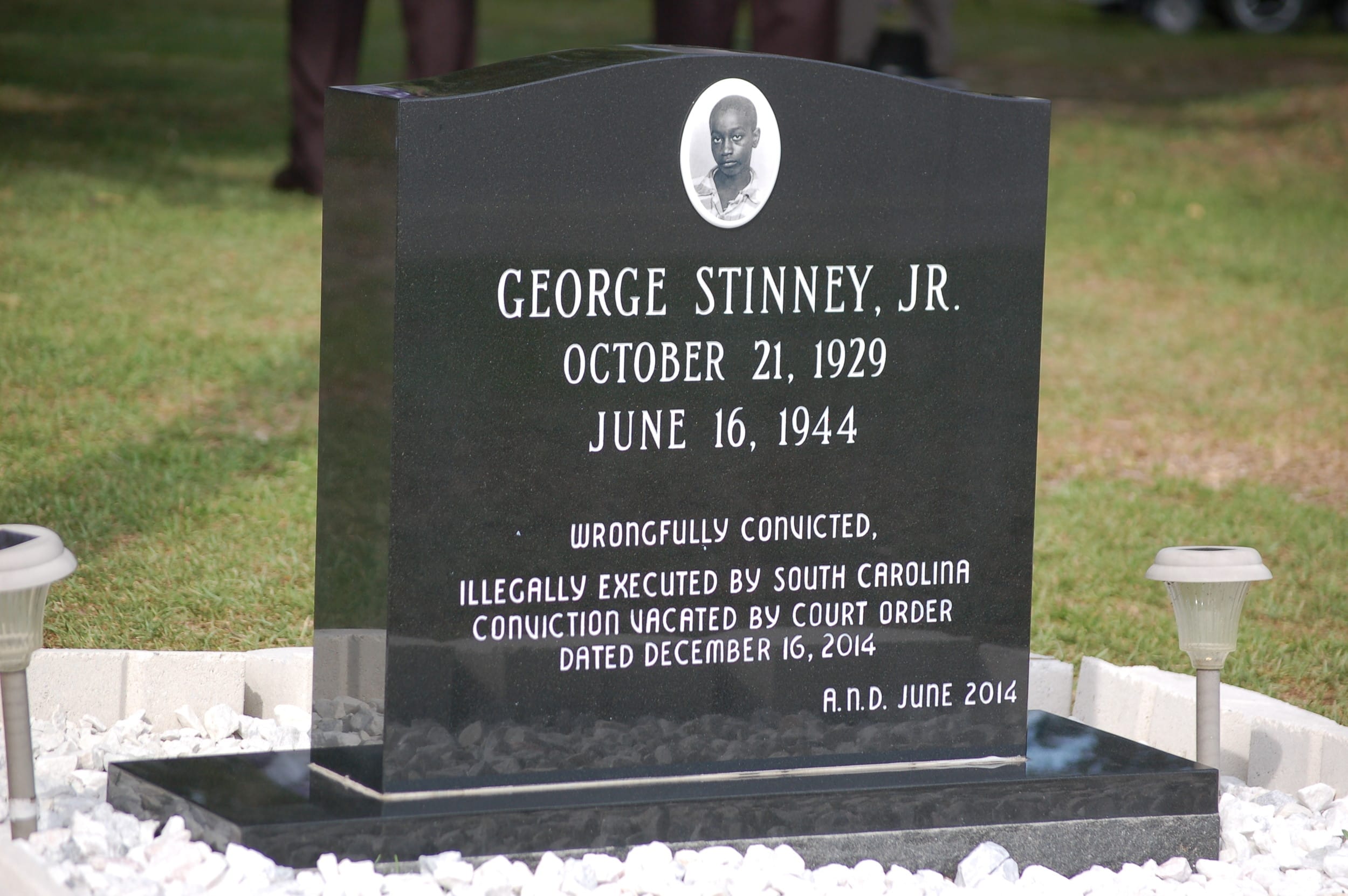Imagine the unwavering love and fierce determination it would take to spend seven decades seeking justice for a wrongly accused sibling. That is precisely what Katherine Stinney embodied. Her brother, George Stinney Jr., became the youngest person executed in the 20th century in the United States, a stark and heart-wrenching testament to the injustices faced by African Americans, particularly within a legal system plagued by racial bias. This is their story – a story of unwavering familial love, relentless pursuit of justice, and a system forced to confront its deeply ingrained prejudices.
The Unthinkable Happens: George Stinney Jr.’s Wrongful Conviction
In 1944, against the backdrop of a deeply segregated South Carolina, 14-year-old George Stinney Jr. was accused of the murders of two young white girls, Betty June Binnicker and Mary Emma Thames, in Alcolu. The fear, suspicion, and deeply rooted racial biases of the time created a volatile environment where a fair trial seemed impossible for a young Black boy.
An all-white jury, influenced by societal prejudices and a trial that lasted a mere two hours, found George guilty. The death penalty was swift and absolute. Eighty-four days after his arrest, George, a boy who some believe might not have even fully grasped the gravity of the situation, was executed.
A Sister’s Strength: Katherine’s Unwavering Belief
Katherine, present when the murders occurred, held an unwavering belief in her brother’s innocence. She knew he couldn’t have committed the crime. What unfolded over the next seventy years was a testament to the strength of her conviction and the power of familial love.
Year after year, decade after decade, Katherine fought tirelessly, facing down a system resistant to change and determined to silence her brother’s story. She challenged the hasty trial, the lack of concrete evidence, and the coerced confession that sealed George’s fate.
Justice, Finally: George Stinney Jr.’s Exoneration
In 2014, Katherine’s unwavering dedication yielded a momentous victory. Judge Carmen Mullen, reviewing George’s case, recognized the egregious miscarriage of justice. She overturned the conviction, acknowledging the lack of evidence, the deeply flawed legal process, and the undeniable presence of racial bias that had plagued the original trial.
Katherine’s fight, while ultimately bringing a degree of closure, exposed the deep-seated prejudice within the justice system and highlighted the vulnerability of Black lives during the Jim Crow era. Though George’s justice came posthumously, Katherine’s unwavering fight continues to serve as a beacon of hope and a call for ongoing vigilance in the pursuit of a more just and equitable society.
Unveiling the Tragedy: George Stinney Jr.’s Untold Story
Recommended Titles:
- “No Sir”: The Haunting Silence of George Stinney Jr.’s Last Words (Leans into the emotional impact and mystery)
- George Stinney Jr.’s Execution: 70 Years of Injustice & the Fight for Truth (Highlights the injustice and the ongoing relevance)
- George Stinney Jr.: What Really Happened on Death Row? (Emphasizes the unanswered questions and potential for new insights)
Powerful Key Lines:
- At 14 years old, George Stinney Jr. was silenced forever, his last words a chilling echo of the justice denied to him.
- Denied a fair trial and facing unimaginable fear, George Stinney Jr.’s last words were simply, “No sir,” a tragic testament to a system that failed him.
- Were George Stinney Jr.’s last words an admission of guilt, or a reflection of the coercion and fear that defined his final days? The truth remains elusive.
- The haunting silence of George Stinney Jr.’s last words resonates through history, a reminder of the devastating consequences of racial prejudice and a flawed justice system.
What Actually Happened to Betty June Binnicker?: Unveiling a Tragic Tale and its Unanswered Questions
While the injustice faced by George Stinney Jr. has echoed through history, it is important to remember the other tragedy at the heart of this story: the deaths of Betty June Binnicker and Mary Emma Thames.
Recommended Titles:
Trending Keywords: George Stinney, Execution, Exoneration, Alternate Suspect, Racial Injustice
Suggested Titles:
- Beyond the Execution: Unraveling the Truth Behind Betty June Binnicker’s Murder (This title focuses on Betty June while hinting at the broader controversy and quest for truth).
- Betty June Binnicker and the Ghost of George Stinney: Justice Denied or Miscarriage of Justice? (This title directly addresses the controversy and poses a thought-provoking question).
- Who Killed Betty June Binnicker? 70 Years Later, the Search for Answers Continues (This title emphasizes the unsolved nature of the murder and the ongoing search for the truth).
Powerful Key Lines:
- Eleven-year-old Betty June Binnicker’s life was tragically cut short in 1944, her murder casting a long shadow over Alcolu, South Carolina, and igniting a firestorm of controversy surrounding the conviction and execution of 14-year-old George Stinney Jr.
- While George Stinney’s conviction was vacated in 2014, the question of who actually killed Betty June Binnicker and eight-year-old Mary Emma Thames remains unanswered, leaving a chilling mystery in its wake.
- The tragic case of Betty June Binnicker transcends a simple murder investigation; it exposes the deep-seated racial prejudice prevalent in the Jim Crow South and raises unsettling questions about due process and justice.
- Despite emerging evidence pointing to alternative suspects and lingering doubts about the validity of George Stinney’s confession, the truth behind Betty June Binnicker’s murder remains elusive, leaving a community and a nation grappling with unanswered questions.
Decades later, the horrific murders of Betty June Binnicker and Mary Emma Thames continue to haunt Alcolu. While George Stinney Jr.’s conviction was overturned, it did not identify the real perpetrator. The question remains: who committed these heinous acts?
Some researchers and those who have studied the case suggest there may have been alternative suspects with ties to the Alcolu community who, due to the racial dynamics of the time, managed to elude scrutiny. Others suggest that critical errors during the investigation may have obscured vital clues.
While the passage of time makes finding the answers difficult, the pursuit of justice for Betty June and Mary Emma remains crucial. With renewed investigative efforts, the hope is that one day, the identity of their killer will come to light, offering their families a semblance of closure and peace.
A Quiet Reminder: George Stinney’s Final Resting Place
George Stinney’s remains were laid to rest at Calvary Baptist Church Cemetery in Paxville, South Carolina, the same state where he was unjustly accused, wrongly convicted, and tragically executed. For years, his final resting place remained unmarked, a poignant reflection of the injustice he faced.
It was only after his name was finally cleared in 2014, thanks to the tireless efforts of his sister, Katherine, that the weight of his story began to resonate more widely.
George’s grave, now marked, serves as a solemn reminder of the fragility of justice, particularly for Black Americans during that era. It is a testament to the enduring power of family and the importance of fighting for what is right, no matter how long it takes.
If you want to find out about trailblazing women in law, you may surely know about the first female African American judge in NYC, judge Jane Bolin. Her work in family and juvenile law is still being discussed. You may also need to know about Kamila Grabska, a polish lawyer, who also happens to be a politician!
- Senior at What Age: Benefits & Eligibility Guide - March 29, 2025
- Unlocking Senior Benefits: How Old is a Senior? Your Complete Guide - March 29, 2025
- Master Russian Politeness:A Guide to Saying Please - March 29, 2025

















2 thoughts on “Katherine Stinney: A Sister’s 70-Year Fight to Exonerate Her Brother, George Stinney Jr.”
Comments are closed.